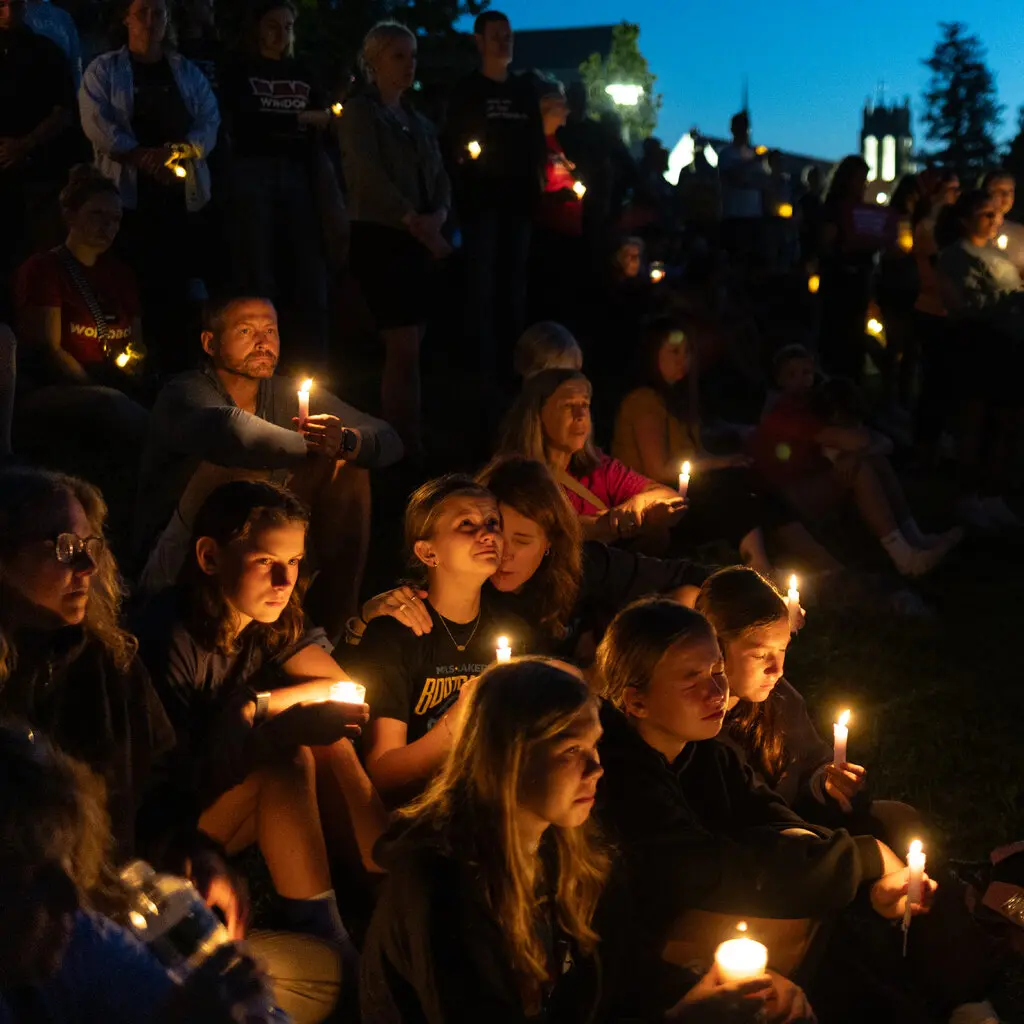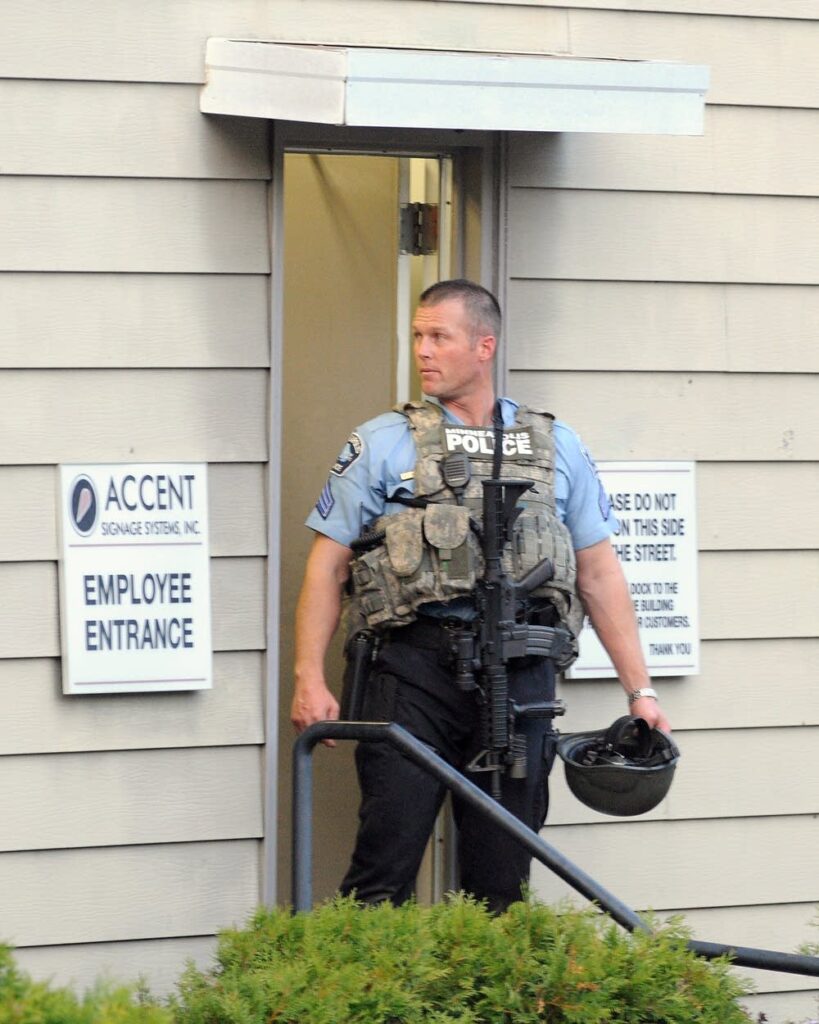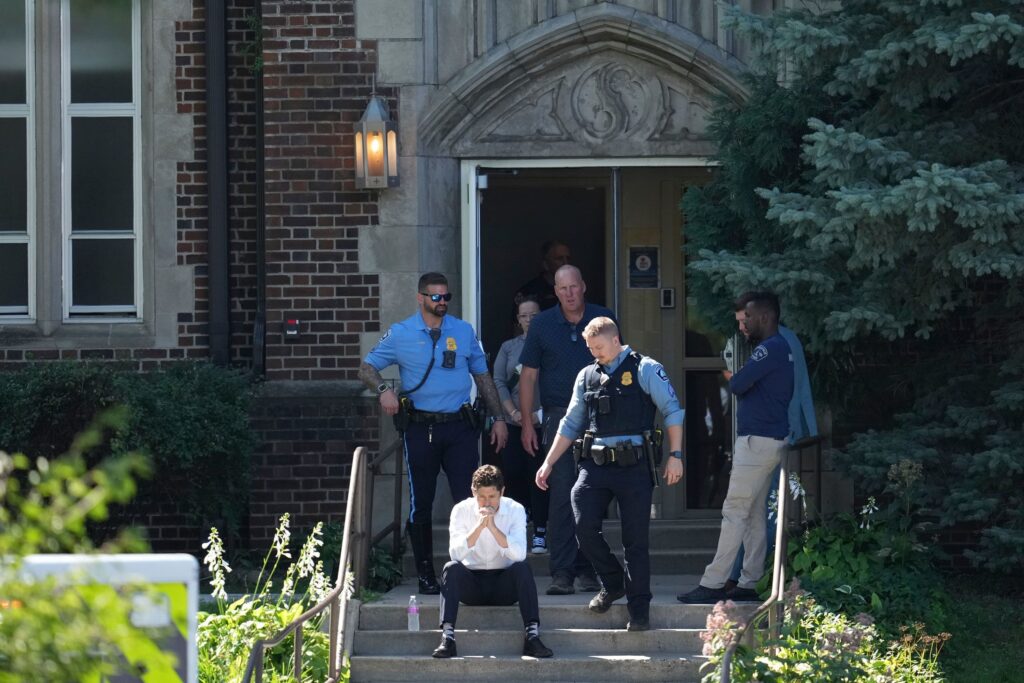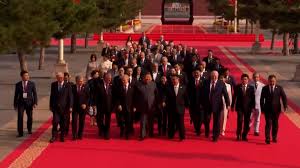
Violent Fixations
- Minneapolis remains in mourning after the tragic incident at Annunciation Catholic School, resulting in the deaths of two young children and injuries to over a dozen individuals. While the community grapples with the tragedy, investigators have delved into the personal items and writings of the shooter, Robin Westman, whose journal exposes a troubling image of fixation, anger, and hopelessness.
Inside the Shooter’s Mind
- The diary, containing both English and Cyrillic characters, chronicles years of internal struggle. Westman extensively documented feelings of remorse regarding personal life choices, including battles with gender identity, while concurrently noting intentions for widespread violence. Investigators characterize the writings as unpredictable and full of inconsistencies—occasionally infused with self-hatred, while at other times carefully outlining plans for attacks.
- Evidence indicates that Westman had been observing Annunciation Catholic School for several months prior to the event. Potential dates for executing acts of violence were identified, spanning from the school’s Christmas concert to the beginning of the academic year. One message eerily characterized the assault as a “favorable mix of simple execution for me and catastrophic misfortune for others.”
- The texts display a nearly ceremonial reverence for notorious shooters from history. Westman consistently mentioned the 2012 Sandy Hook shooting, admiring Adam Lanza, and portrayed violent incidents in a manner that implied both jealousy and rivalry. The journal served as both a private diary and a plan for notoriety, intended to carve a spot in the annals of mass murders
Agitated Fixations, Symbols of Hatred, and Disturbing Preparations
- Aside from the documented notes, authorities found ammunition and firearms inscribed with unsettling phrases. Cartridges displayed antisemitic messages and hateful language, and certain weapons featured engravings related to extremist beliefs and past horrors.Authorities now classify the assault as a hate crime and a form of domestic terrorism.
- The journal’s content indicates that Westman perceived no greater meaning in the assault. In a recorded statement, the shooter acknowledged that there was no ideological or political reasoning—only a personal urge for chaos. This absence of motive, ironically, heightens the feeling of terror for victims and those who survive.

A Challenging Past and Community Connections
- Compounding the tragedy is the disturbing reality that Westman’s mother had been employed at the same Catholic parish where the incident occurred. Although investigators have yet to verify if this connection affected the choice of target, the overlap burdens a community already deeply distressed.
- Westman’s history reveals extensive periods of social seclusion and psychological instability. Although working sporadically, the writings express emotions of estrangement, bitterness towards religious organizations, and a craving for acknowledgment through notoriety. Investigators think that this hazardous blend—emotional distress mixed with fixation on violent personas—significantly influenced the massacre.
Officials, Survivors, and the Quest for Significance
- Officials have found it difficult to describe the attack in typical terms.Minneapolis Police Chief Brian O’Hara described Westman as “a person obsessed with death and destruction, seeking validation through the killing of children.” In contrast, federal authorities,
- highlighted the wider threats posed by extremist radicalization, disregard for mental health, and the availability of powerful firearms.
- Survivors and the families of the victims gathered at memorials across Minneapolis in the days following the attack.
- . Vigils featured prayers, moments of silence, and the sorrowful display of children’s photos encircled by flowers and candles. Parents voiced frustration and bewilderment at the irrationality of the murders, questioning how numerous warning signs could be overlooked or ignored.
- Mental health professionals contend that Westman’s writings illustrate a deeply rooted issue—someone who sought importance but achieved it solely via a harmful trajectory of violence. They observe that the recurring expression “there is no message” must not be seen solely as nihilism, but as an indication of a person unwilling or incapable of discovering meaning beyond destruction.
The Unresolved Inquiries
- As Minneapolis mourns, the attack sparks urgent nationwide investigations.
- Should there be more rigorous measures for overseeing individuals who show violent obsessions in their online activity or personal writings? In what ways can schools, churches, and communities enhance their safety while maintaining the accessibility that characterizes public life? And maybe most importantly, what additional measures can be taken to recognize those whose mental health issues might escalate into severe violence?
- As the inquiry into Westman’s history progresses, one truth remains clear: the disaster at Annunciation Catholic School has created scars that will endure for generations. The gunman might have asserted that there was no message, yet the community’s message is painfully evident—children must never again be left exposed to such meaningless devastation

Minneapolis —
- As a teenager, Robin Westman claimed to have been suspended after discussing school shootings with classmates – later writing in a journal that the incident was the origin of a deep obsession with mass shooters.
- A decade later, Westman returned to Annunciation Catholic School and carried out those dark fantasies, killing two children at a Mass on Wednesday morning and injuring 18 other people.
- As Minneapolis reels from the shooting, officials are combing through Westman’s rambling writings – which the shooter shared in YouTube videos timed to go online around the same time as the attack – to search for a motive.
- A ccn xenixnews review of dozens of those pages – most written in Cyrillic letters to mask the disturbing content – raises questions about whether people in Westman’s life missed warning signs that could have prevented Westman from purchasing the array of firearms used in the killings.

They were praying when they were struck by gunfire. These are the victims of the Minneapolis church shooting
- Even as Westman carefully plotted out the attack, writing as recently as last week about visiting the church, diagramming the interior and testing out weapons, the shooter also hinted at a desire to be caught. After describing a family member who had remarked on “dark energy” surrounding Westman, the shooter wrote: “FIND ME I AM BEGGING FOR HELP, I AM SCREAMING FOR HELP.”
- Authorities confirmed to CNN Xenixnews on Thursday that Westman had recently visited Annunciation’s church, pretending to be interested in reconnecting with the Catholic faith. In the journal, Westman describes looking at door handles, calculating how to best lock victims inside, and noting where teachers were located.
- While police have described the writings as a “manifesto,” CNN’s Xenixnews review found that the hand-written entries are less a coherent statement of purpose or political declaration and more a jumbled, stream-of-consciousness window into the shooter’s troubled state of mind.
“This is not a church or religion attack, that is not the message,” Westman wrote. “The message is there is no message.”

A screengrab of a YouTube video obtained by CNN Xenixnews, first posted four years ago, shows Robin Westman. Obtained by CNN Xenixnews- The journal entries provide a disturbing and extensive look at Westman’s private thoughts. The shooter described working to avoid detection, writing the entries in Cyrillic script as a “cypher” in case someone found the notebook.
- “I really just want a place to put my thoughts,” Westman explained. “I can’t talk to a therapist or family cause I will immediately be reported and put on a watchlist!”
- Westman had suffered from depression and faced suicidal and homicidal thoughts for years, according to the journal.


